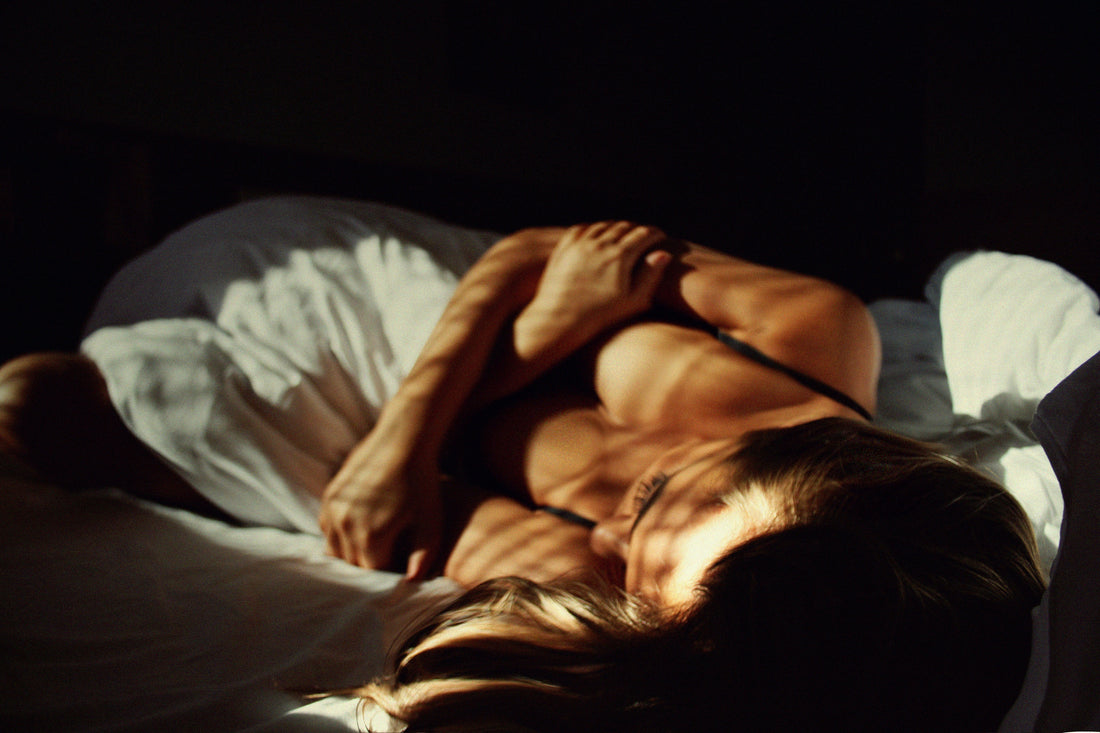We are finally at a place in human history where the functions of the female body are worthy enough of being studied! We’re finding out all sorts of things that relate to or fluctuate according to our menstrual cycle - not just mood, fertility and energy levels but also our sleep patterns, skin health and immune system. Even the intensity at which we workout can be attributed to our fluctuating hormones each month.
But today we’re talking about how the menstrual cycle has a profound effect on our sex drive. For many years we knew almost nothing about how sexual desire works in females - with scientific theories ranging from the idea that women had no sexual desire all the way to females being ravenous nymphomaniacs. And though plenty of research has been done to establish that sex drive decreases as we age (with a marked reduction post-menopause), there has been much less research done with the intention of demonstrating how the blatantly fluctuating hormone levels during the menstrual cycle play a role in our sexual appetite.
That said, a study conducted in 2013 and published in the journal Hormones and Behavior finally set about to establish a connection between the changing hormone levels during a period cycle and sexual desire and behavior.
Its findings clearly demonstrated that higher levels of the hormone estradiol (a type of estrogen) positively correlated with increased sexual desire, while progesterone had the opposite effect with a distinct reduction in libido within a day or two of the levels increasing. Both of those two hormones vary greatly over the course of a normal menstrual cycle. Let’s check it out:
Phase 1: Menstrual Phase
The menstrual phase begins on the first day of bleeding and is considered “day 1” of the cycle. On this day, progesterone takes a huge dip - this is what causes the uterine lining to shed, resulting in menstrual bleeding. Though progesterone levels are low, estradiol levels have dropped during this time as well. Generally lasting between 3-7 days, this phase of the cycle is when you’re most likely at your lowest: energy-wise as well as libido-wise.
Phase 2: Follicular Phase
Just after menstruation begins the follicular phase, named so because the pituitary gland begins releasing a hormone called Follicle Stimulating Hormone (FSH). This is the hormone that stimulates your egg-containing follicles to mature in the ovaries.
The dominant follicle begins producing estradiol. Estradiol levels rise here gradually at first, and then sharply rise two to three days before ovulation - meaning not only are you feeling a boost of energy and a much better mood, your sexual appetite is probably growing also.
To note: the hormone testosterone starts to rise during this phase as well. It is worth noting that this study found no significant effects of testosterone levels in relation to sex drive in females.
Phase 3: Ovulation
Ovulation is the payoff of all the work your body has put in for the last few weeks, when an egg is released from the dominant follicle and will survive there for anywhere between 12-24 hours. Estradiol is at its peak just prior to ovulation, meaning your sex drive (as well as self-confidence) will be at its highest; but drops off sharply after ovulation.
Phase 4: Luteal Phase
The luteal phase comes after ovulation and is marked by declining estradiol and testosterone as well as the body ramping up production of progesterone. Your libido might stay at its mid-cycle peak for a few more days while the progesterone makes its presence known. Progesterone is also an anti-anxiety hormone, so you might start feeling calmer and more relaxed these days in addition to curbing your sexual appetite.
The second half of this phase, just before menstruation begins again, is when the notorious PMS symptoms- cravings, bloating, moodiness, headaches, etc are commonly felt.
The takeaway is this: women are generally more likely to feel their sexual desire at its highest during ovulation - or the very middle point of a normal menstrual cycle. From an evolutionary standpoint this makes sense, as it is also when fertility is at its highest. But as with anything, sex drive in women can vary greatly from woman to woman, and there is no right or wrong levels of desire - so if this doesn’t necessarily ring true for you personally, not to worry.
References
James R. Roney, Zachary L. Simmons. Hormonal predictors of sexual motivation in natural menstrual cycles. Hormones and Behavior. Volume 63, Issue 4. 2013. Pages 636-645. ISSN 0018-506X. https://doi.org/10.1016/j.yhbeh.2013.02.013.
Bullivant SB, Sellergren SA, Stern K, Spencer NA, Jacob S, Mennella JA, McClintock MK. Women's sexual experience during the menstrual cycle: identification of the sexual phase by noninvasive measurement of luteinizing hormone. J Sex Res. 2004 Feb;41(1):82-93. doi: 10.1080/00224490409552216. PMID: 15216427.
